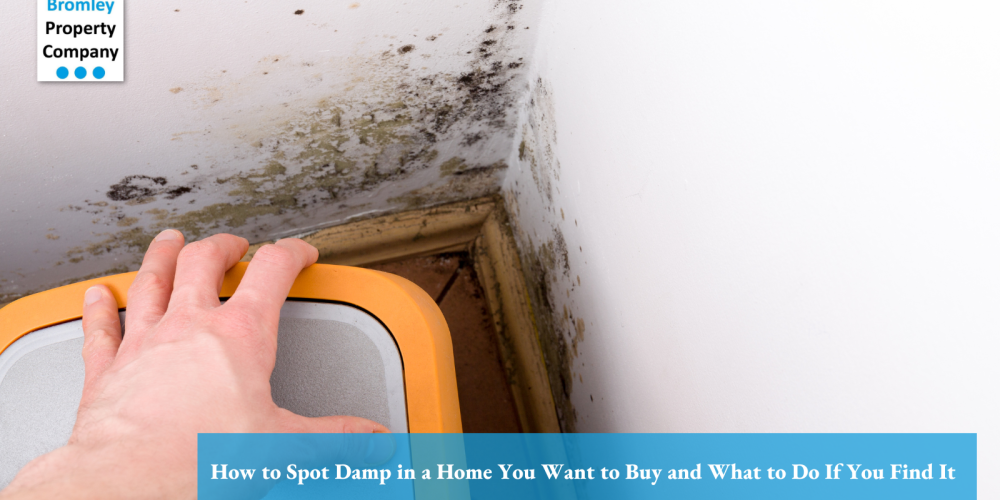Buying a home is a significant investment, and it’s crucial to ensure that you make an informed decision. One of the key issues to be aware of when purchasing a property is the presence of damp. Dampness can lead to a host of problems, including structural damage, health issues, and mould growth. In this blog post, we will guide you on how to spot signs of damp in a home you want to buy and provide you with actionable steps to take if you do find it.
Look for Visual Clues: When inspecting a potential new home, keep an eye out for the following visual signs of damp:
a) Dark or discoloured patches on walls or ceilings: Stains or patches that appear damp, mouldy, or discoloured indicate a moisture issue.
b) Peeling or bubbling paint: Moisture can cause paint to deteriorate, resulting in peeling or bubbling surfaces.
c) Musty smell: A persistent musty odour is often associated with dampness or mould growth.
d) Water stains around windows or doors: Check for water stains or signs of water ingress around these areas, as they may indicate leakage or poor sealing.
e) Damaged or decaying skirting boards: Wooden skirting boards that are rotting or showing signs of decay could be an indication of long-term moisture exposure.
Assess any Basement or Cellar: Basements or cellars are more prone to dampness due to their location below ground level. Pay attention to the following indicators:
a) Efflorescence: A white, powdery substance on the walls or floor is a sign of salt deposits caused by moisture seepage.
b) Damp or wet surfaces: Touch the walls and floors to check for any dampness or moisture. They should feel dry to the touch.
c) Mould growth: Look for visible signs of mould, such as black or green patches, particularly in corners or on porous surfaces.
Check the Bathroom and Kitchen: Areas with high moisture levels, such as bathrooms and kitchens, are common hotspots for damp issues. Keep an eye out for:
a) Mould or mildew in corners or on tiles: Check for any signs of mould growth on grouting, sealant, or tile surfaces.
b) Peeling or cracked caulking: Damaged or deteriorated caulking around sinks, bathtubs, or showers can lead to water penetration and subsequent dampness.
Seek Professional Help: If you spot any signs of dampness or are unsure about the extent of the issue, it’s recommended to consult a professional. A qualified surveyor or building inspector will be able to assess the severity of the problem and provide guidance on the necessary steps to remediate it.
Consider Remediation Costs: Before finalising your decision to buy a damp-affected property, it’s essential to factor in the potential costs of remediation. Depending on the severity of the damp issue, repairs can range from simple fixes, such as improving ventilation or sealing gaps, to more extensive measures like replacing damp walls or installing a damp-proof course.
Spotting signs of dampness in a home you want to buy is crucial to avoid potential problems and costly repairs down the line. By paying attention to visual clues, inspecting vulnerable areas, and seeking professional advice, you can make an informed decision regarding the property. Remember, while damp issues can be resolved, it’s important to consider the associated costs and the impact it may have on your future home. With due diligence and the right approach, you can confidently navigate the process of buying a home and ensure a healthy living environment for you and your family.
Like this post on how to spot damp in a home? Read more of our blogs and articles here

